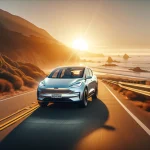Developers seeking higher performance in AI vision solutions now have expanded options, as e-con Systems integrates support for the NVIDIA Jetson Thor series. This move is set to impact sectors such as robotics, automotive, medical, and humanoid platforms, where demands for robust processing and real-time data handling are increasing. The advanced pairing aims to facilitate easier development of next-generation devices, with e-con integrating a wide selection of cameras and compute modules configured for edge AI workloads.
Earlier updates on e-con Systems mainly focused on their USB and GigE camera series supporting previous NVIDIA Jetson modules, emphasizing real-time vision performance and compatibility. New developments now highlight deeper integration with the 10G Holoscan Camera solutions and feature broader support for multi-sensor fusion. Industry sources emphasized that before Jetson Thor, developers often faced constraints with compute resources and latency—limitations that the current collaboration aims to minimize for industrial automation and autonomous systems projects.
What’s Included in e-con Systems’ Expanded Portfolio?
e-con Systems presents a comprehensive product lineup to support the Jetson Thor, including the See3CAM USB Cameras for rapid prototyping, RouteCAM Ethernet Cameras with ONVIF compliance for networked applications, and the advanced 10G e-con HSB solution leveraging Camera Over Ethernet (CoE) technology. CoE supports direct data transfer from camera to GPU memory, which can enhance response speeds by minimizing CPU involvement. These tools aim to streamline real-time vision tasks and support image resolutions up to 20 megapixels.
How Do Hardware Features Benefit Developers?
The introduction of a compact ECU platform, built specifically for the Jetson Thor, targets the practical needs of robotics and AI-enabled machines operating in demanding environments. This compute unit provides real-time processing and has been designed with autonomous mobile robots and humanoids in mind. e-con’s multi-sensor support includes several camera modules such as Sony IMX715, IMX568, onsemi AR0234, IMX900, AR2020, and ISX031, enabling developers to integrate their preferred vision technology for various AI applications.
What Are e-con Systems’ Future Plans?
Future product roadmaps indicated by e-con Systems include extending their platform to stereo cameras using the 10G sensor processing board, which supports the Holoscan Sensor Bridge system. This feature is anticipated to bring improvements in depth sensing and obstacle detection, supporting more complex perception capabilities for upcoming robotics deployments. CTO Prabu Kumar Kesavan highlighted the intent behind these innovations:
“With support for multiple interfaces, real-time processing, and AI-enabled superior imaging, our Thor-compatible solutions empower developers to accelerate innovation in robotics, autonomous systems, and next-gen edge AI applications.”
Along with enhancing imaging capabilities by offloading intensive processing from the NVIDIA GPU, e-con’s compact HSB board aims to maximize compute resources for AI applications. Kesavan added,
“Our compact e-con 10Gbit/s HSB board, featuring a proprietary TintE ISP, enables ultra-low latency imaging and multi-sensor flexibility while efficiently offloading image processing from the NVIDIA GPU—freeing up compute resources and optimizing performance for AI-driven tasks across industries.”
These features align with the industry shift toward modular, scalable solutions for a broader range of real-time applications.
As demand grows for high-resolution, low-latency vision in AI and robotics, e-con Systems’ extended support for NVIDIA Jetson Thor delivers enhancements in both hardware integration and performance flexibility. Organizations in automation, healthcare, and advanced robotics now have more adaptable options to deploy custom vision systems. Developers benefit from the ability to select from a mix of rapid prototyping tools, industrial cameras, and scalable compute modules—all compatible with the latest NVIDIA edge AI platform. For those exploring multi-sensor fusion, direct-to-GPU data routing, or depth perception, these offerings can be leveraged to reduce development time and resource usage while meeting industry requirements. Monitoring upcoming roadmap developments will be important for companies anticipating stereo vision and advanced perception needs in future projects.










